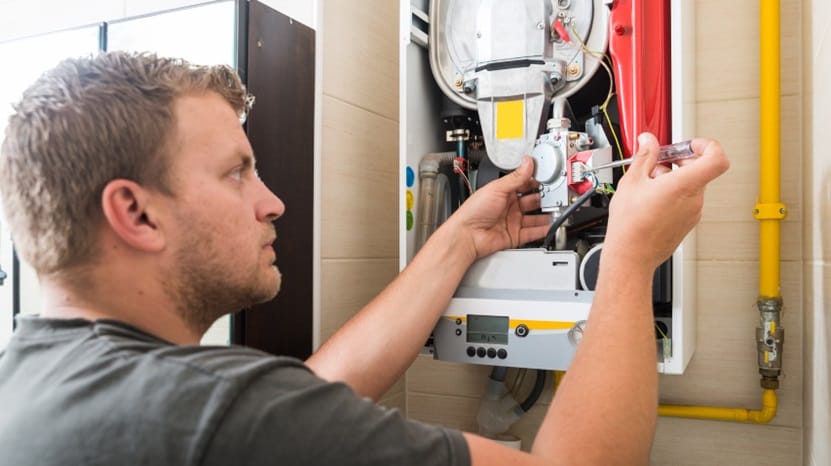
A properly functioning furnace becomes crucial to maintaining comfort and safety in your home as the temperature drops. However, furnaces can experience several issues, especially in cold climates. Addressing these problems proactively with furnace maintenance at Rosemount can save time, money, and stress. This article explores common furnace problems and practical prevention tips.
Common Furnace Problems in Cold Climates
Ignition or Pilot Light Issues
A furnace that fails to ignite correctly often leads to inadequate heating. Common causes include dirty burners, faulty ignition systems, or problems with the thermocouple. In gas furnaces, this issue can result in incomplete combustion, reducing energy efficiency.
Dirty or Clogged Filters
Filters are critical for maintaining airflow and ensuring the system runs efficiently. When filters are dirty or clogged, they strain the furnace, leading to reduced efficiency and even overheating.
Frequent Cycling
Frequent on-and-off cycling can signal an issue with the thermostat, airflow, or overall furnace capacity. This not only wastes energy but can also cause undue wear on the system components.
Blower Motor Problems
The blower motor is essential for distributing warm air throughout your home. If it malfunctions due to wear, dirt, or lubrication issues, you may notice inconsistent heating or strange noises.
Cracked Heat Exchanger
In colder regions, furnaces often operate continuously for extended periods. Over time, this stress can cause cracks in the heat exchanger, leading to carbon monoxide leaks—a serious health and safety hazard.
How to Prevent Furnace Issues
Schedule Regular Maintenance
The best way to avoid furnace breakdowns is to invest in routine inspections and tune-ups. Professional furnace maintenance Rosemount services can identify potential issues early and ensure your system runs smoothly during winter.
Change Filters Regularly
Replacing filters every 1-3 months, depending on usage, can significantly improve airflow and system efficiency. Clean filters help prevent dust buildup and overheating.
Seal and Insulate Your Home
A well-insulated home reduces the strain on your furnace by maintaining indoor temperatures. Check for drafts around windows, doors, and vents, and use caulking or weatherstripping to seal gaps.
Monitor the Thermostat
Ensure your thermostat is set correctly and functioning properly. Smart thermostats can optimize energy use and reduce wear on your furnace by avoiding unnecessary cycling.
Address Repairs Promptly
If you notice unusual sounds, uneven heating, or increased energy bills, contact a professional immediately. Delaying repairs can exacerbate problems and lead to costly breakdowns.
Additional Tips for Prolonging Furnace Life
- Keep the Area Around the Furnace Clear
Maintain at least three feet of clearance around your furnace to ensure proper ventilation and prevent accidental damage.
- Avoid Overworking the System
On particularly cold days, layering clothing and using space heaters can reduce reliance on your furnace, prolonging its life span.
- Test Carbon Monoxide Detectors
Since cracked heat exchangers can lead to carbon monoxide leaks, regularly test your detectors to ensure your family’s safety.
Also read: The Ultimate Guide to Choosing the Right Furnace for Your Home
Conclusion
Living in cold climates demands a reliable furnace to ensure comfort and safety. By addressing potential issues early and following preventative measures like regular furnace maintenance Rosemount; you can keep your system running all winter efficiently. Investing in proper care and timely repairs will extend the life of your furnace and keep your home warm and secure.


 Why You Should Always Hire a Licensed and Insured Electrician
Why You Should Always Hire a Licensed and Insured Electrician  Air Conditioning Repair vs. Replacement: How to Make the Right Decision for Your Home
Air Conditioning Repair vs. Replacement: How to Make the Right Decision for Your Home  How to Improve Indoor Air Quality in Homes: Practical Tips and Strategies
How to Improve Indoor Air Quality in Homes: Practical Tips and Strategies  An In-Depth Exploration of Comfort Tech San Antonio Services
An In-Depth Exploration of Comfort Tech San Antonio Services  How Does Winter Weather Affect Your HVAC System?
How Does Winter Weather Affect Your HVAC System?  The Benefits of a Fire Pit for Year-Round Outdoor Living
The Benefits of a Fire Pit for Year-Round Outdoor Living  The Role of Minimalist Lighting in Modern Interior Design: Trends and Functional Analysis
The Role of Minimalist Lighting in Modern Interior Design: Trends and Functional Analysis  Top Security Features to Look for in a Garage Door
Top Security Features to Look for in a Garage Door  Comprehensive Guide to Mold Removal in Hunterdon County: Safeguarding Your Home and Health
Comprehensive Guide to Mold Removal in Hunterdon County: Safeguarding Your Home and Health